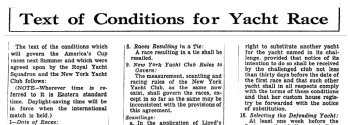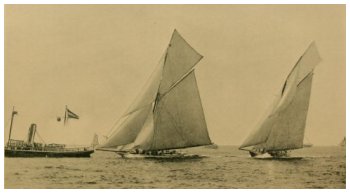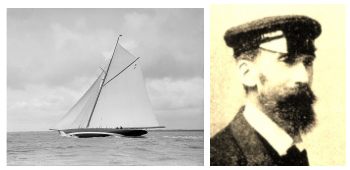 AMERICA'S CUP
AMERICA'S CUP1851-1937
"If we can fly today in the San Francisco Bay, this is because there have been "adventurers" like Walter Greene and Mike Birch.
To understand the future, we must know and respect the past."
Loïck PEYRON (Voiles et Voiliers July 2014)
![]()






 NEW YORK, SUNDAY, JANUARY 11, 1920.
NEW YORK, SUNDAY, JANUARY 11, 1920.




 John Bryant Paine (1870-1951) is the second son of the seven children of Gen. Charles J. Paine. The large family lived in their big property in Weston. The Weston house had a schoolroom behind the grand staircase where the children did their lessons in the spring and fall. In the 1880s the older boys, Sumner and John, went to Mr. Hopkinson’s school in Boston before going on to Harvard.
John Bryant Paine (1870-1951) is the second son of the seven children of Gen. Charles J. Paine. The large family lived in their big property in Weston. The Weston house had a schoolroom behind the grand staircase where the children did their lessons in the spring and fall. In the 1880s the older boys, Sumner and John, went to Mr. Hopkinson’s school in Boston before going on to Harvard. William Umpleby Kirk was a pioneering photographer. He took one of the first photographs of a vessel in motion ever taken in Britain using a continuous shutter. These were pictures of Queen Victoria’s yacht Alberta steaming into Cowes at a speed of 10 knots and earned him a royal warrant.
William Umpleby Kirk was a pioneering photographer. He took one of the first photographs of a vessel in motion ever taken in Britain using a continuous shutter. These were pictures of Queen Victoria’s yacht Alberta steaming into Cowes at a speed of 10 knots and earned him a royal warrant. DUNCAN, Edward, a water-colour painter, was born in London in 1803. He was articled to Robert Havell, the aquatint engraver, and was thus afforded frequent opportunities of studying, and occasionally of copying, the works of William Havell.
DUNCAN, Edward, a water-colour painter, was born in London in 1803. He was articled to Robert Havell, the aquatint engraver, and was thus afforded frequent opportunities of studying, and occasionally of copying, the works of William Havell.

